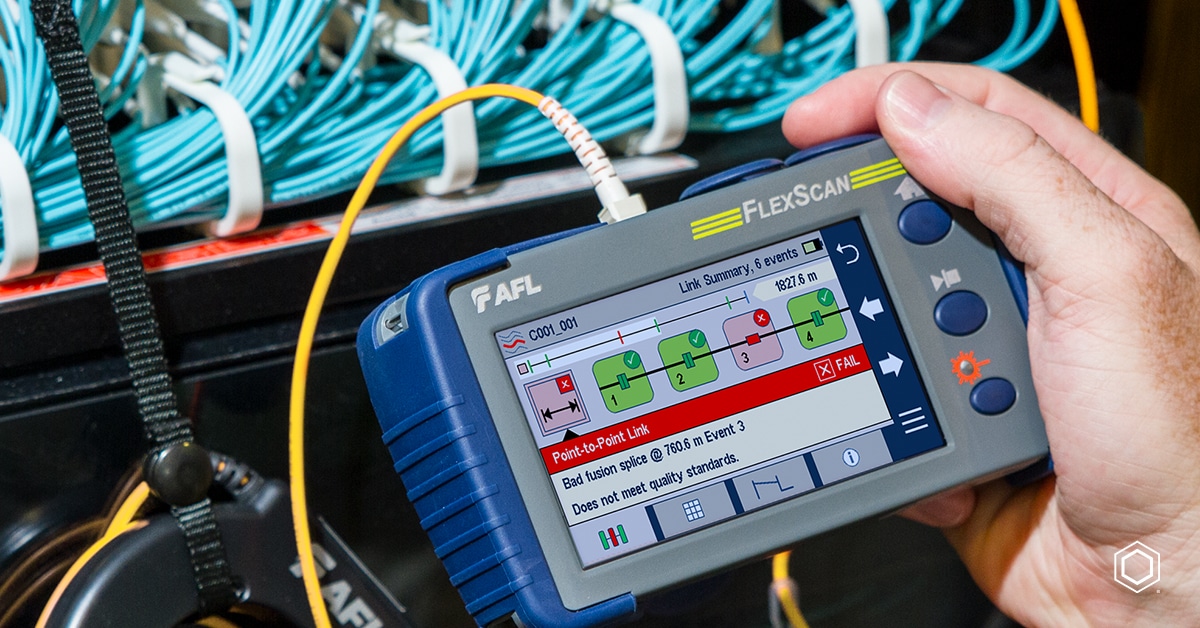Exploring the Advantages of Optical Fibre Checking for Boosted Interaction Solutions
The relevance of optical fiber screening in contemporary communication systems can not be overemphasized, as it offers as a structure for guaranteeing network integrity and efficiency. This proactive screening strategy has profound effects for signal high quality and functional effectiveness, increasing the inquiry of just how these methods contribute to lasting sustainability in an ever-evolving technological landscape.
Significance of Optical Fibre Testing
The importance of optical fibre screening can not be overstated in today's data-driven setting. As companies significantly depend on high-speed information transmission for daily operations, the stability and efficiency of optical fiber networks are extremely important. Examining ensures that these networks can support the huge amounts of information created and transferred effortlessly, fostering efficient interaction and connection.
Optical fibre screening serves numerous vital functions, consisting of validating installation quality, identifying prospective mistakes, and figuring out total system efficiency. Regular testing can prevent costly downtimes and solution disturbances, allowing organizations to preserve functional connection. In addition, it aids in conformity with market criteria and guidelines, guaranteeing that fibre optic installations satisfy required specs for safety and integrity.
Furthermore, testing can enhance the longevity of fibre optic systems. By proactively determining problems such as signal loss, depletion, or connector failures, organizations can attend to troubles before they rise, thus extending the life of their infrastructure. In summary, optical fiber screening is not just a technical need but a tactical investment that enhances network integrity, maximizes performance, and ultimately supports the growth and performance of modern-day communication systems.
Key Examining Approaches

OTDR is an essential technique utilized to identify faults, step splice losses, and evaluate the overall honesty of a fiber optic link. By sending a pulse of light down the fiber and evaluating the reflected light, technicians can pinpoint areas of mistakes and review the network's performance over fars away.
Insertion loss testing gauges the quantity of signal loss that takes place when light travel through a link or splice. This method is important for confirming that connections meet specific loss limits, which is necessary for maintaining ideal performance in communication systems.
Optical return loss screening evaluates the quantity of light mirrored back towards the resource because of imperfections in the fiber or links. High return loss worths show better efficiency and minimized signal degradation.
Together, these testing methods provide an extensive evaluation of fibre optic networks, guaranteeing their dependability and functionality in varied communication applications.
Influence On System Performance
Effective optical fibre screening straight affects the overall performance of communication systems. By guaranteeing the stability of fiber optic cables, testing determines possible mistakes such as depletion, splice loss, and port misalignment. These issues can substantially weaken signal quality, resulting in disruptions and reduced data transmission speeds.

In addition, regular optical fibre screening adds to long-term system sustainability. It enables very early detection of damage, enabling timely maintenance and upgrades prior to significant failings happen. This not just prolongs the lifespan of the framework but also ensures that interaction systems continue to be competitive in regards to efficiency.
Cost-Effectiveness and Performance
Cost-effectiveness is a critical factor to consider in the deployment and maintenance of optical fibre networks. Carrying out durable optical fiber testing treatments can dramatically decrease functional expenses by recognizing issues before they intensify into major troubles. fibre testing equipment. By finding mistakes, attenuation, and other efficiency barriers early, companies can stay clear of expensive fixings and downtime, which can disrupt services and cause earnings loss
Moreover, reliable testing techniques simplify the installation process, allowing service technicians to function better. This translates to decrease labour prices and faster job conclusion times. Advanced screening devices, such as Optical Time Domain Name Reflectometers (OTDRs), makes it possible for a precise analysis of fibre quality, ensuring that only optimum materials are utilized, thus lessening waste.
Normal screening also adds to far better source allocation. By comprehending the network's performance, organizations can make enlightened choices concerning upgrades and growths, making sure that click financial investments are made where they are most required. In recap, optical fibre testing improves cost-effectiveness and effectiveness, supporting the long-lasting sustainability and competitiveness of communication systems in a progressively requiring market.
Guaranteeing Long-Term Reliability
Applying rigorous optical fiber testing not only improves cost financial savings and functional effectiveness however also plays a critical role in making sure the lasting integrity of communication networks. Constant screening techniques, including depletion and bandwidth evaluations, aid identify potential degradation in fibre performance prior to it leads to solution interruptions.
By employing sophisticated screening techniques, network operators can pinpoint mistakes or weak points in the fibre infrastructure, enabling for timely removal. This proactive technique minimizes downtime, ensuring that communication systems remain practical and effective. In addition, routine testing adds to my review here the development of a much more resistant network, as drivers can adapt and maximize their facilities based on real-time data insights. robotic vision.
In addition, making certain compliance with sector standards through optical fibre testing strengthens the high quality and stability of the entire interaction system. This adherence not just boosts confidence amongst stakeholders but also straightens with regulatory demands, which are significantly rigid.
Final Thought
In conclusion, optical fiber testing offers as a fundamental part in boosting communication systems. By using various testing methods, such as OTDR and insertion loss analyses, networks can achieve optimal performance and dependability.